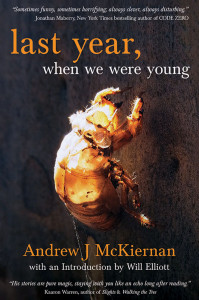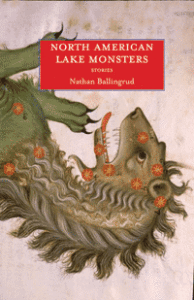 Living With the Dead by Martin Livings
Living With the Dead by Martin Livings
Publisher: Dark Prints Press
ISBN: 978-0-9871976-6-5
There’s a quote attributed to Harlan Ellison about writing which goes: “The trick isn’t becoming a writer. The trick is staying a writer.” If this is taken as true, then Martin Livings has certainly mastered the trick. For twenty years Livings has been publishing horror fiction fairly consistently, and of a quality high enough to have received multiple nominations (and a couple of wins) of nearly every major Australian speculative-fiction award there is. He has published a novel, novellas, and novelettes, but it is in the short story form that Livings is most prolific, and possibly, at his best.
Living With The Dead is Martin Livings’s first published collection of short stories. Brought to us by Dark Prints Press, the book (in its physical form) is a striking and hefty trade paperback with a marvellously evocative monochromatic cover illustration by Vincent Chong. Inside are twenty three stories; a reprint story for each of Mr Livings’s published twenty years, plus three brand new stories. That might seem like a lot of stories for a single-author collection, but this isn’t just a ‘greatest hits’ compilation. Living With the Dead is more a retrospective collection of Livings’ writing career to date. While not presented in publication order, the decision to include so many stories does mean a more variable collection overall. But, considering the high quality of the stories throughout, this matters little, and the inclusion of so many tales does give an interesting (and more complete) overview of Livings’s progression as writer.
Being as there are so many stories, I’ll limit myself to commenting on those I found exceptional and name dropping those that I found merely good. As you’ll see, even that will still cover a great portion of the collection.
Lollo is the lead-story, and as it is a story about an evil clown doll, it is sure to creep out a large portion of the horror reading genre. I’ve never really been bothered by that particular fear — I think clowns much maligned, in fact — but Lollo was written well enough to keep me hooked. Maybe it’s the 80s slasher film feel to the story that lifts it above the typical evil-clown tale? Sort of like a Tarantino mash-up of 80s horror. Whatever it is, Lollo is a great lead in to the collection and certainly sets the tone.
You Ain’t Heard Nothin’ Yet is the first original tale to the collection, and one that tickled both my ‘what if’ and ‘film history’ buttons. The premise? What would a snuff film from the era of Silent Film be like? In typical Livings style, he holds back from the obvious tack of hack-and-slash gore until the last excruciating moment. I’m glad that, after a rough publication history, this story has seen print. It’s a really good one.
Running is a story originally written for Agog Press’s giant monster anthology ‘Daikaiju’. It takes the absurd ‘sport’ of Running With the Bulls and makes it even more absurd. And yet, at the same time, Running is a touching story of how the forces of nature (such as hurricane Katrina) can affect and change our lives. It is often this mix of the absurd with the touching that makes Livings’ work so memorable.
Piggies is a story I missed when it was first published, and a good thing too or I probably would never have written my own The Final Degustation of Doctor Ernest Blenheim. The ideas are so similar, that Piggies acts almost as a prequel. What lifts Piggies far above my own story, is Livings’ ability (like that of his story’s protagonist) to cut things right back to the bone. Piggies is short and sharp and all the more disturbing for it.
In Nomine Patris (see, I’m listing near every story here!) is another short tale. Incest, abortion, cannibalism, religion and all handled sensitively in only 3 1/2 pages. Where many authors would pad out a idea like this, Livings leaves you with only the barest of bones. It is restraint like this that makes Livings well worth reading.
Hooked is possibly the most twisted tale in the book. Not for the gore or surreal twists of Livings’ other works, but for the way it takes our childhood dreams and turns them into something much more horrible and (probably) much more realistic. Here J.M.Barrie’s Peter Pan is given the Livings treatment, with all our favourite characters descending into crime, prostitution and drug addiction. A cautionary tale maybe, for those who find it too hard to give up their childhoods?
Living With the Dead, the title story, is one of the older tales in the collection. Despite the spectre of HIV/AIDS Hysteria having long faded from our media-ruled consciousnesses, it would be too simple to change this tale of social cleansing to a more modern disease or even life-choices and other perceived ‘differences’ (such as sexuality or religion) and for it to still have relevance. Keeping this in mind, Living With the Dead loses none of its impact almost 20 years past its original publication.
Birthday Suit is another story original to the collection, and my favourite of the lot. Others must have thought so too, because Birthday Suit was recently short-listed for just about every Australian spec-fic award and won the Australian Shadow Award for best Horror Short Story. The tale has the feel of Ray Bradbury about it, of normal lives lived and the bittersweet experiences that can bring. I won’t even go into the premise of Birthday Suit, because I want you to discover it for youself. It is so good an idea I can’t believe nobody thought of this before. But, then again, I’m glad it is Martin Livings who was the writer who did think of it as he certainly does the concept justice. Birthday Suit is so wonderful and beautiful and sad, that (even though I’d read it before) it really topped off the collection for me.
A few other stories deserve mention. Down Town, Smiley, Into the Valley and The Last Gig of Jimmy Rucker (written with Talie Helene) are all wonderful too. This isn’t too say that any of the stories in this collection are bad or not worth reading. Some are indeed more mature, more assured, than others but all were deserving of their initial publication and it is a treat to read them all collected here.
Overall, Living With the Dead is a great collection of tales, although a little uneven at times. It shows Martin Livings to be an author who enjoys tugging on his readers’ heartstrings just as much as he enjoys severing them. Twenty years is a long time to have been publishing short stories but, on the strength of Living With the Dead, I’m hoping that in twenty years I’ll be waxing lyrical about Martin Livings’ second retrospective collection.
 Last Year, When We Were Young
Last Year, When We Were Young

 Living With the Dead by Martin Livings
Living With the Dead by Martin Livings![midnight-and-moonshine-web[2]](/wp_content/uploads/2012/12/midnight_and_moonshine_web2.jpg) Midnight and Moonshine by Lisa L Hannett and Angela Slatter
Midnight and Moonshine by Lisa L Hannett and Angela Slatter